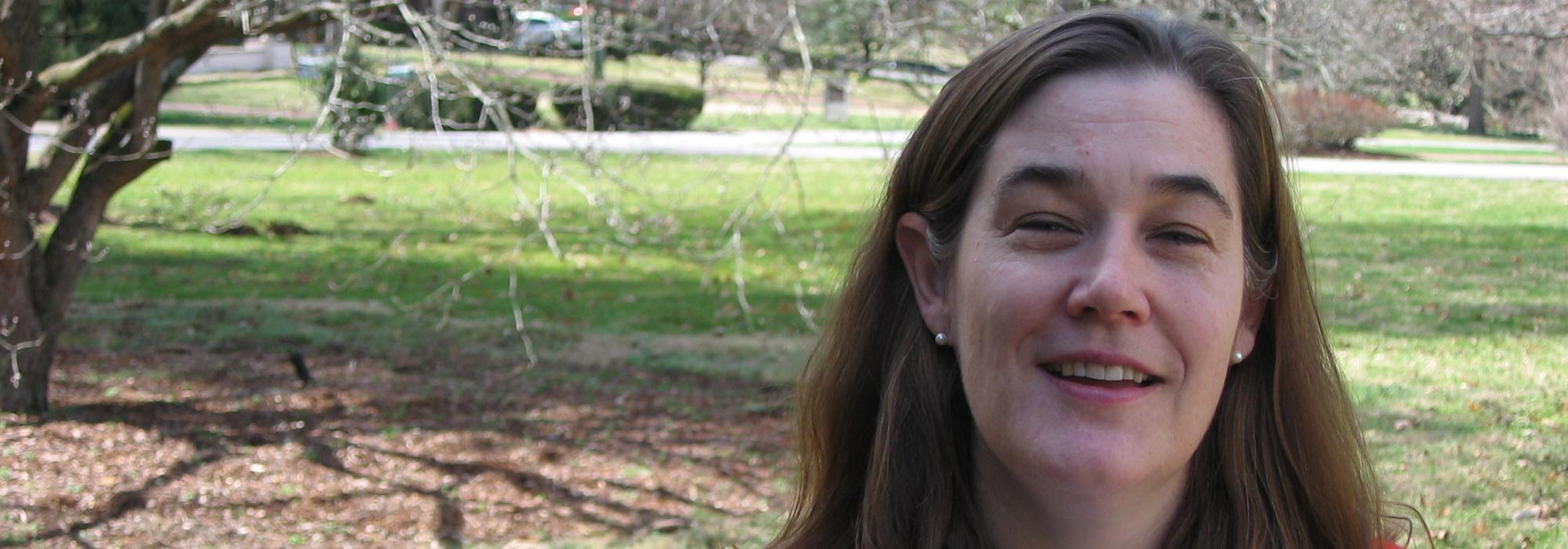It Takes One: Emily Evans
I grew up in Cambridge on Maryland 's Eastern Shore. The lower Eastern Shore of my youth was and pretty much still is a wild and desolate landscape. Unless you have lived in a place like it you cannot fully appreciate how the landscape and its relationship with time, weather and tide controls and defines the way people live their lives.This is a fact I did not fully appreciate as a bored teenager yearning for the action and excitement of city life. I went to Mount Holyoke College in Massachusetts and afterwards, set out for New York City where I could find the human intersection with landscape inverted; there man defined and controlled the landscape like very few places on earth.
I spent a number of years in investment banking in New York. Met and married a native Nashvillian and lit out for the most western and southern point in my life. In Nashville, I continued working in the investment banking field but was ultimately downsized into full-time motherhood and community volunteerism when my employer was swallowed by a larger New York company.
For the past five years I have been active on several boards including the Belle Meade Plantation, Historic Nashville, Inc., Tennessee Preservation Trust, the Nashville Neighborhood Alliance, and my own neighborhood association. I also have the joy and angst of raising three perfectly charming children, ages 12, 10, and 7.
How would you define a cultural landscape?
A cultural landscape is, to me, a place that leaves its imprint, its mark on the human character. It is also a place that is marked or imprinted by human endeavor. More commonly, however, a cultural landscape is a little of both.
The wild salt marshes of lower Dorchester County, Maryland is a cultural landscape that has shaped for thousands of years the habits, the economy, the language and the attitude people who inhabit it. Central Park in New York is a cultural landscape that was created almost entirely out of the imagination of one man. Every rock, every path, every patch of grass was given careful consideration. Today, I live amidst a cultural landscape. One of the principal features of this landscape is a gently sloping road sheltered by a canopy of red maples that meanders from Richland Creek to the interior of the neighborhood. At the top of the rise the road forks at a private neighborhood park as the scene almost literally explodes into wide view of parkland ringed by houses. The thoughtfulness of the design has yielded, over many years, residents, past and present who consider this place much more than a collection of houses.
Why did you get involved in the landscape that was threatened in your community?
The first and only house my husband and I have ever owned is in a small residential suburb in Nashville. Three years ago, a private K-8 school that occupies one small corner at the edge of our neighborhood announced plans to demolish eight historic homes, remove many mature trees, cut and fill and re-grade the parcel to accommodate two regulation size interscholastic athletic fields.
The proposed location of these athletic fields was directly across the street from a triangular shaped private neighborhood park that was part of the subdivision's original 1915 plan. So, the proposed soccer fields meant not just the loss of 8 historic structures but a permanent alteration in the design. The original design called for homes to edge, on all three sides, this private park thereby creating a sort of interplay of park space and home space; of public space and private space, of buildings and void. Furthermore, the proposed athletic fields were to be located at one of the most remarkable gateways to the neighborhood thus redefining the area from neighborhood space to school space.
Because this plan required zoning approval from the local government, my neighbors, the Metro Nashville Historical Commission, Mayor Bill Purcell's office and many other concern citizens from across the city worked together to educate ourselves and others about the impact the school's plans would have. In the course of our research, we discovered that the neighborhood had been developed by locally known developer, Johnson Bransford. Furthermore, Bransford had a strong early interest in landscape design that set him apart from other developers of the era. Bransford developed and maintained a relationship with O.C. Simonds of Chicago from about 1909 to about 1925.
Faced with enormous opposition, the school withdrew from the zoning approval process. Many of the neighborhood residents, who became activated by their opposition to the zoning issue, sought a more permanent solution to neighborhood preservation and returned to a months-dormant project of applying a Neighborhood Conservation Overlay Designation. In an effort to thwart this protective zoning designation, the school sought demolition permits for their 8 houses. The city government stepped in and suspended the permits until the legislative process accorded a Conservation Overlay had run its course. In time the City Council recognized the need to preserve this neighborhood and voted overwhelmingly in favor of the Conservation Overlay.
The end result of our work is unclear at this writing. The school has pressed several civil lawsuits and the outcomes of those will be determined by the Tennessee Court of Appeals sometime this spring or summer. The public statements by the school seem to indicate that, notwithstanding an adverse ruling from the court, they will try and wait out the opposition in hopes of having their soccer fields some day.
How did your understanding of this landscape change as a result of your advocacy efforts?
I appreciated almost immediately the influence of a landscape designer on our neighborhood. What took me more time to appreciate was the influence this landscape had on our collective experience. As we battled this private school, people who had loved our neighborhood and since moved on began to contact us. The curious thing was not their recollection or nostalgia for their childhood home; it was their fondness for the neighborhood as a whole. Their memories, many from the pre-air conditioning era, focused on the games they played amongst the houses and in the private neighborhood park. They recalled the friendships, many still intact 60-70 years later. In essence, they came to testify to the enormous impact the landscape of our neighborhood had and still has on their lives.
In hearing their stories and recollections I awoke to the realization that their memories, their experience were in many ways no different from the experience of my own children, notwithstanding the passage of 50-70 years. The realization brought me around to the understanding of the timelessness of our landscape. People (and private schools for that matter) come and go but our landscape endures and leaves its imprint on our lives forever.
Did the understanding of others change as well? If so, how?
Because the history of this neighborhood and its unique design was an important factor in preventing thus far an incompatible intrusion, residents past and present came to understand and appreciate what they had was no happy accident. This product of one man's vision represented an effort to make a neighborhood more than just a series of streets banked with houses. As such, this cultural landscape was determined to be worth preserving.
What is the message that you would like to give our readers that may inspire them to make a difference?
It may take one match to light a fire but it takes many to haul the wood and build the pyre. We were so lucky in that we had many, many people committed to saving our community. Each and everyone of them found a place, a niche to help. Some were fabulous public speakers, some were quiet child caregivers, some were financial donors. Many people are discouraged from making a difference because they feel they will shoulder the burden alone. With any good cause this is rarely true. I would also say that because everyone was able to find a comfortable place to contribute to the cause, I met some wonderful people. I established friendships that I can only image will endure long after this controversy is gone.







